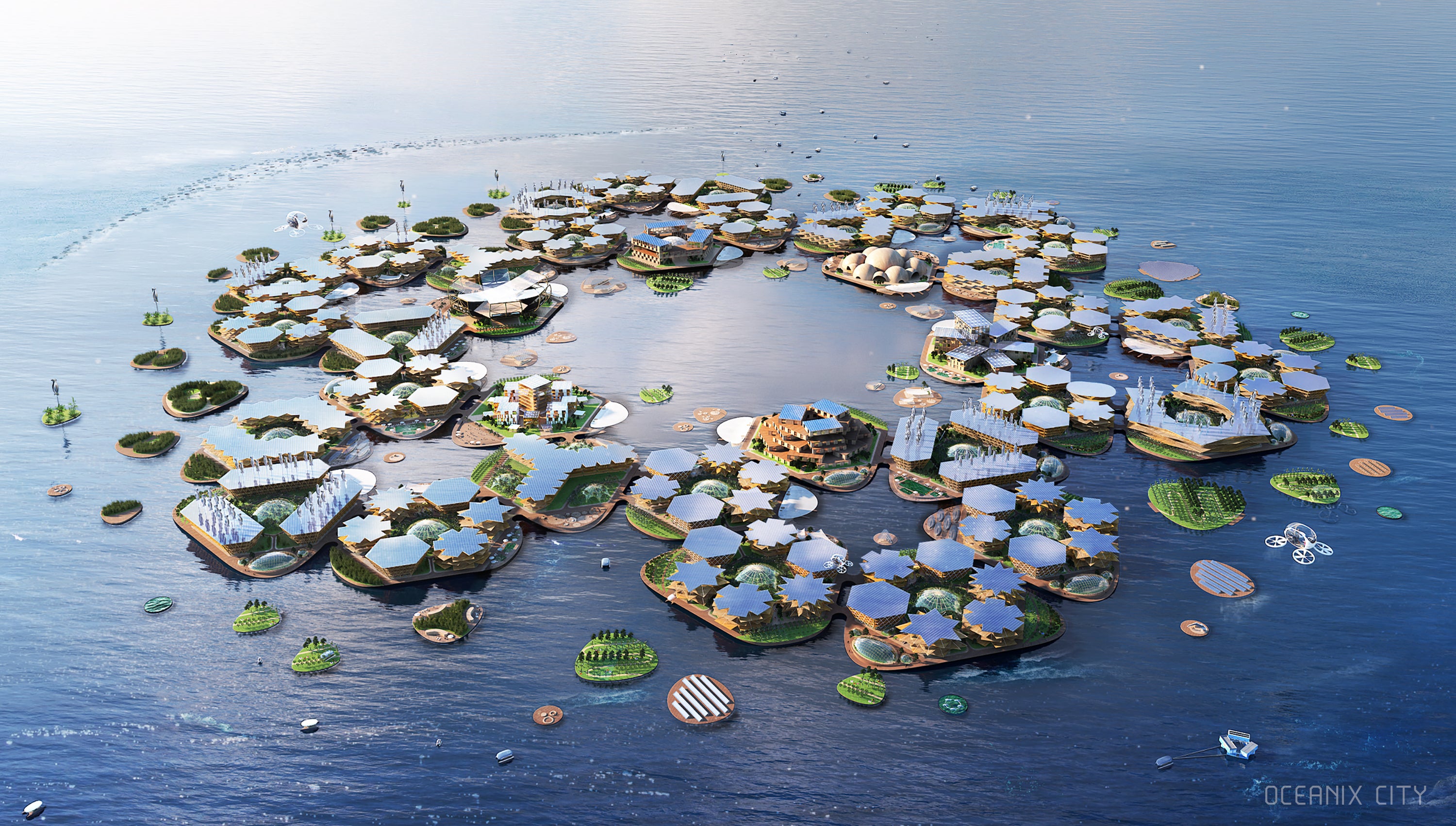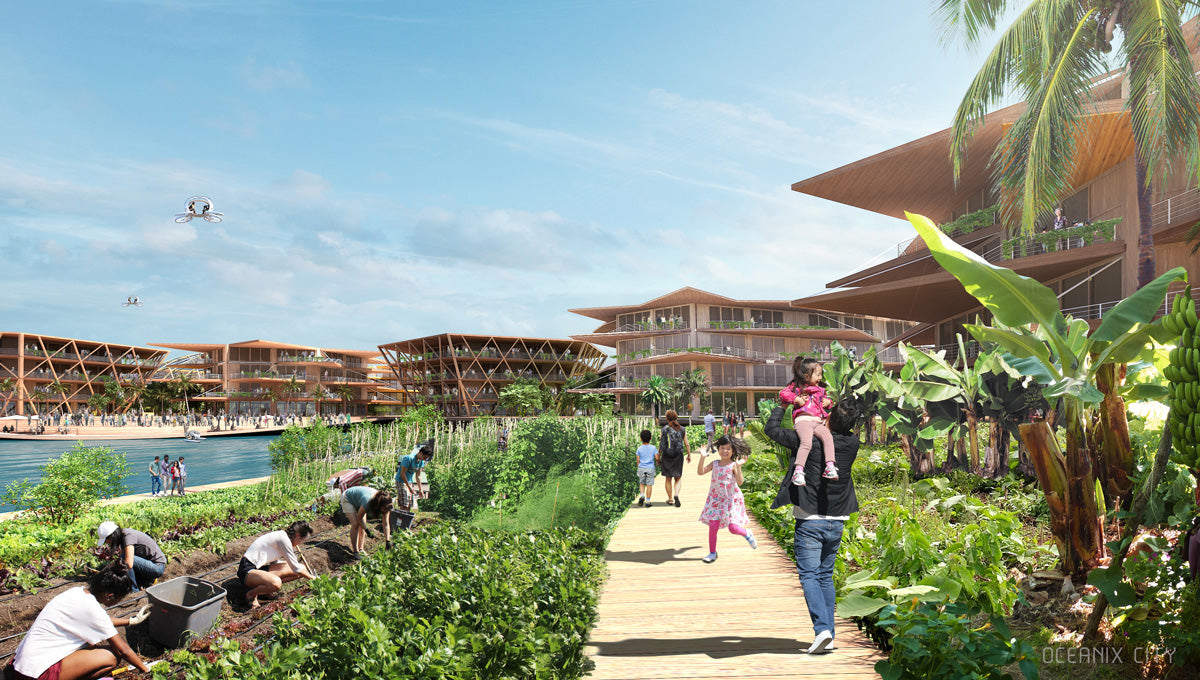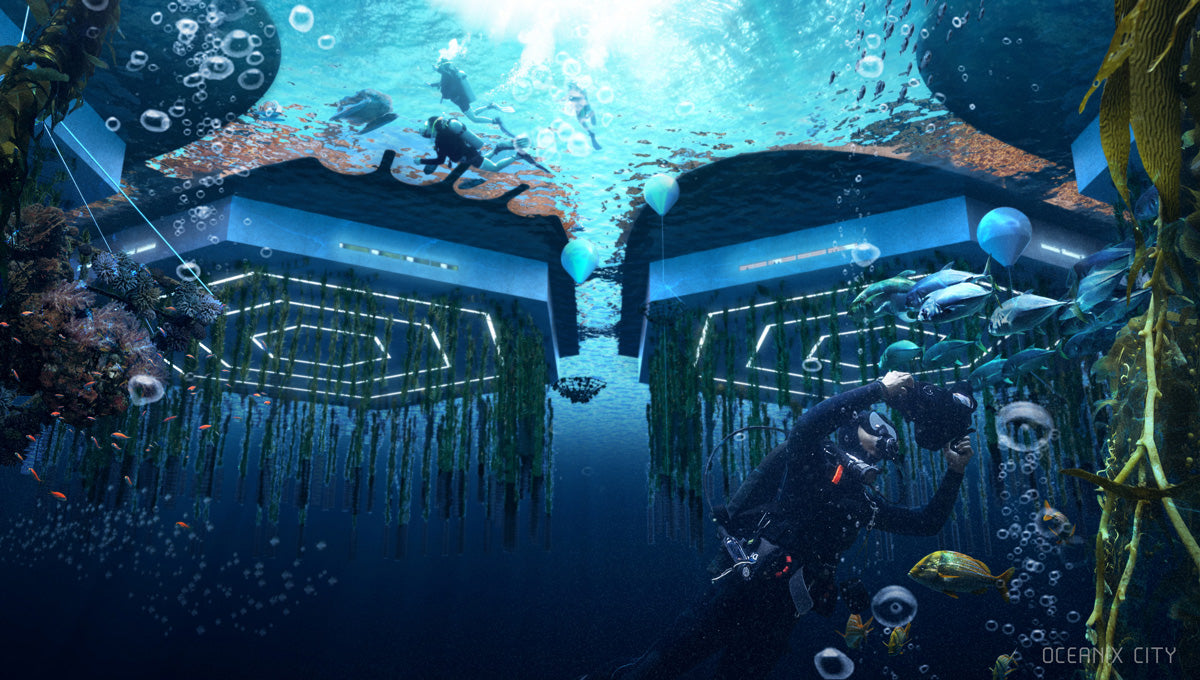The future is increasingly heading towards sustainability, searching for new ways to survive and create innovative solutions to the problems that arise from climate change; one of them is the threat coastal cities and countries face due to rising sea levels.
The United Nations Human Settlement Programme (UN-Habitat) gathered in a round table, jointly convened by MIT’s Center for Ocean Engineering (OCEANIX) and the Explorers Club, gathering innovators, marine engineers, scientists, and explorers to come up with a plan. Two out of five people in the world live less than 100 kilometers away from the coast, one in ten lives in coastal areas, less than 10 meters above sea level. The vast majority of the coasts will be affected by coastal erosion and floods, displacing millions of people, destroying houses and infrastructure.

We are the UN agency in charge of working with cities, whether on land or water. We are ready to start a conversation on sustainable floating cities, to guarantee that this flourishing sector offers good results that benefit all people. – Maimunah Mohd Sharif, Executive Director of UN-Habitat and Under Secretary General of the United Stations
One of the topics addressed during the meeting were the feasable solutions before the possible catastrophe that is coming. Among them were self-sustainable floating cities, which produce their own food, energy, drinking water, and have zero waste. This is how the idea of OCEANIX CITY was born, the first city with these features in the world, designed to hold 10,000 inhabitants.

It is not one versus another. Technology exists so we can live over the water without killing marine ecosystems. Our purpose is to make sure flotation is sustainable, cities will be affordable and available for all coastal areas that need it. This should not turn into a privilege for rich people”. – Marc Collins Chen, Co-founder and CEO of OCEANIX
One feature that should be mentioned is that it will not only be sustainable, but also flood-proof and will be designed to resist mega storms. The project will be designed by Bjarke Ingels Group.
By 2050, nine out of 10 of the world’s largest cities will be exposed to rising tides. The ocean is our destination; it can also be our future. The first sustainable and self-sufficient floating community, OCEANIX CITY, is designed as a man-created ecosystem that canalizes circular energy flows, water, food, and waste. OCEANIX CITY is a model for a modular sea metropolis anchored in the goals of sustainable development. Additive architecture can grow, transform, and adapt organically through time, evolving from a 300-resident neighborhood to a city of 10,000 inhabitants, with the possibility to grow indefinitely to provide prosperous nautical communities for people who care for one another and for our planet”. – Bjarke Ingels, Founding Partner of BIG





